Following a summer during which shoals developed at an alarming pace in Manasquan Inlet, a dredge boat from the U.S. Army Corps of Engineers has arrived to clear the inlet’s channel.
The dredge boat Murden, home-ported in Wilmington, N.C., was working in the inlet Monday through high winds and rolling seas. The boat was generally working on the area near the inlet’s eastern terminus, where it meets the ocean, between the two jetties. The shoaling occurred along the south jetty in Point Pleasant Beach, and became so severe that it was possible for visitors to set up beach chairs below the rocks at low tide, prompting Point Beach officials to enforce safety ordinances.
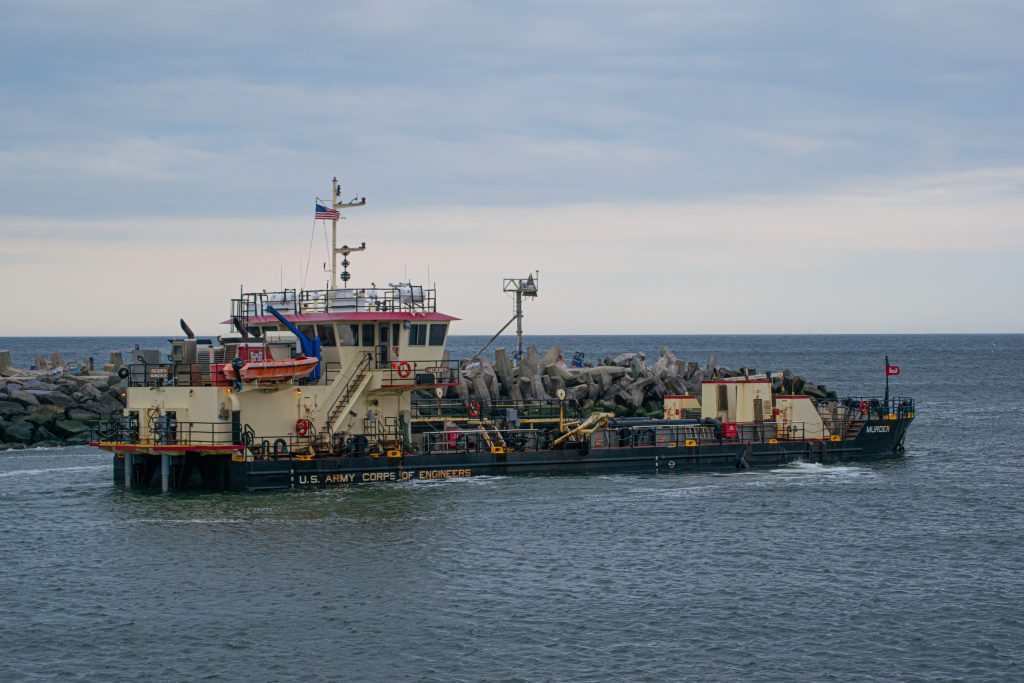
The USACE dredge boat Murden clears a channel through Manasquan Inlet, Feb. 6, 2023. (Photo: Daniel Nee)
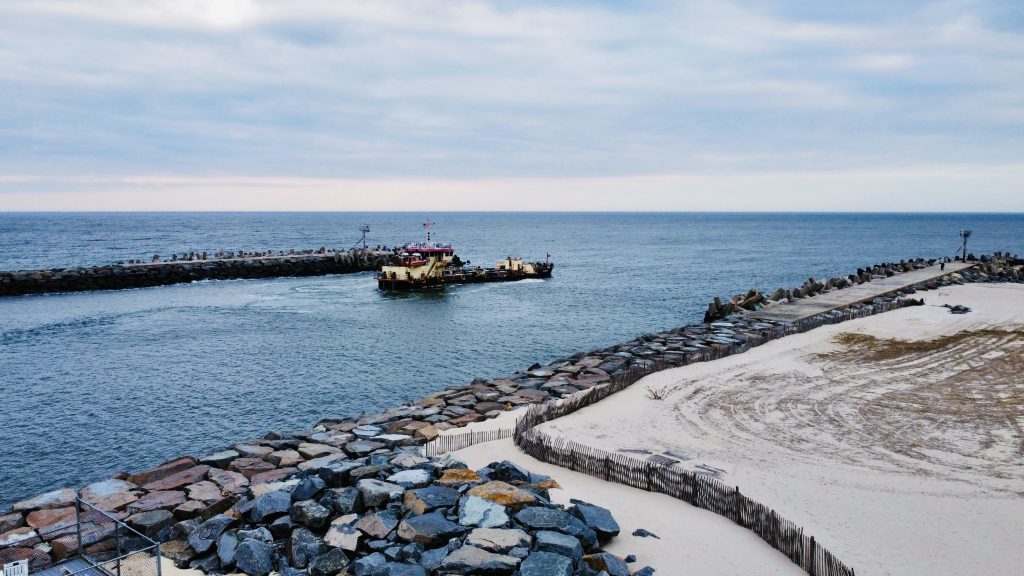
The USACE dredge boat Murden clears a channel through Manasquan Inlet, Feb. 6, 2023. (Photo: Daniel Nee)
Local residents would be forgiven to mistake the Murden for the Currituck, which is more commonly deployed to New Jersey for inlet dredging activities. While the two vessels look similar, the Murden is a purpose-built, split-hull hopper dredge that was commissioned in 2011. The Currituck was adapted to the dredge role and was built in 1974. Murden stretches 156-feet in length and displaces 639 tons when loaded with dredge sand. Its twin diesel-powered engines are powered by 14,500 gallons of on-board fuel.
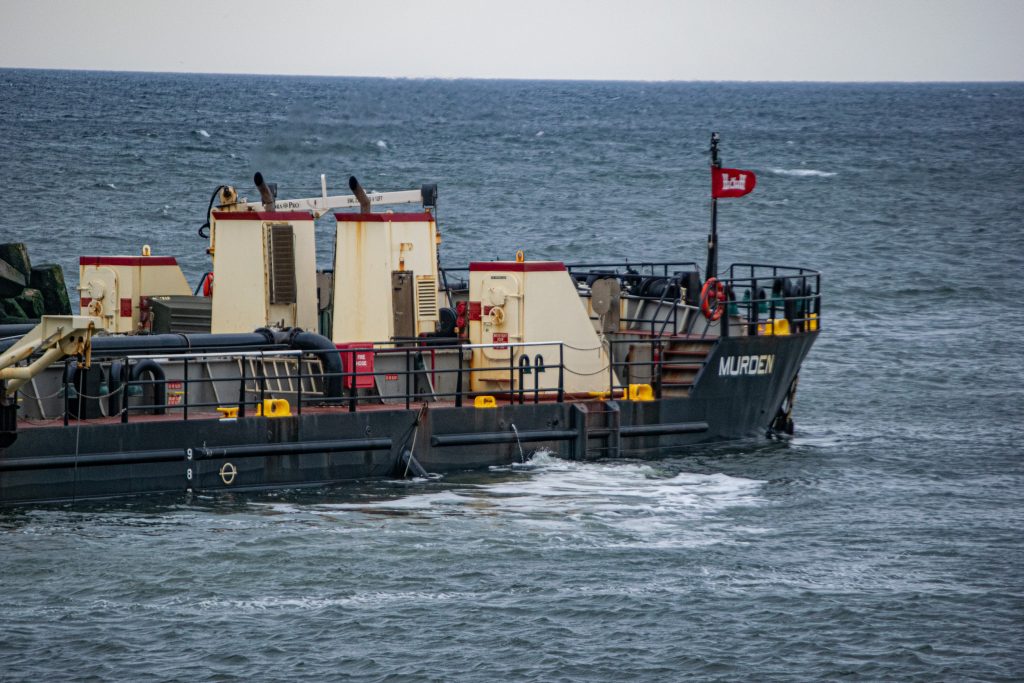
The USACE dredge boat Murden clears a channel through Manasquan Inlet, Feb. 6, 2023. (Photo: Daniel Nee)
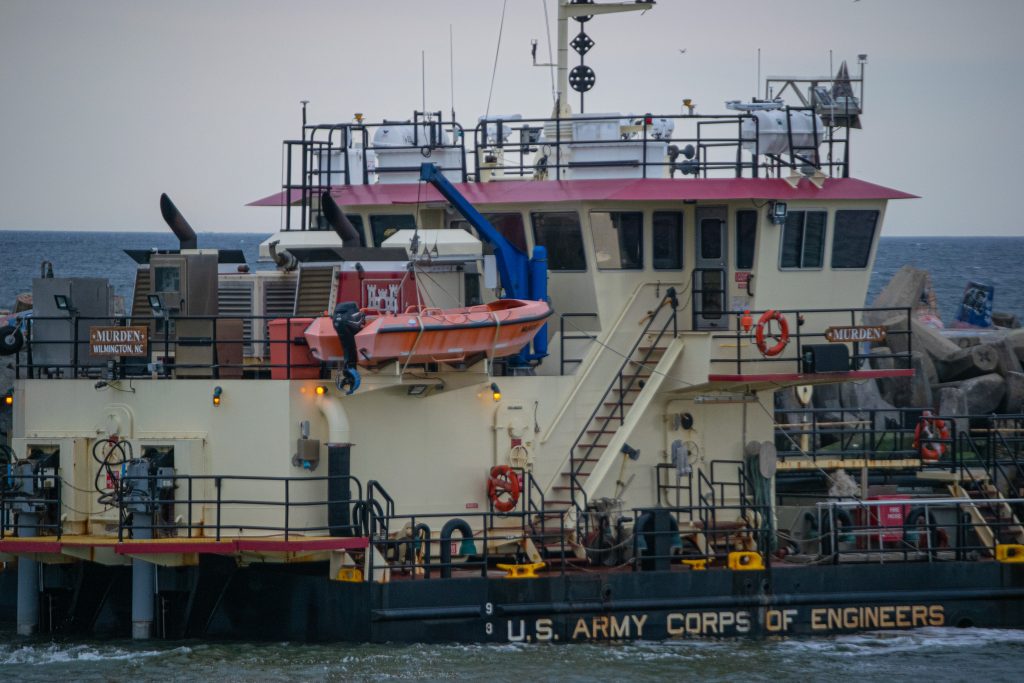
The USACE dredge boat Murden clears a channel through Manasquan Inlet, Feb. 6, 2023. (Photo: Daniel Nee)
A split-hull hopper dredge utilizes a suction pipe which is dragged along the bottom of a shallow channel, essentially vacuuming up sand and silt. The sand flows into the hull of the boat itself – known as the “hopper” – and the water flows back out to sea. When the hopper is filled with sand, the hull mechanically “splits,” dumping the dredged-up sand in a location offshore or on a beach for replenishment purposes. In the case of Manasquan Inlet, Murden has been dispersing the sand just off the inlet in deep water.
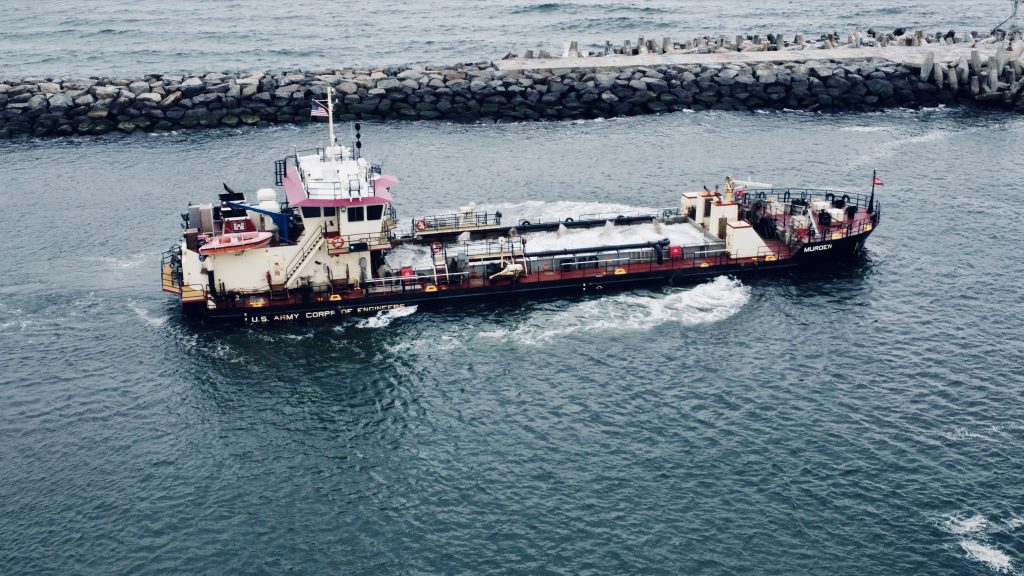
The USACE dredge boat Murden clears a channel through Manasquan Inlet, Feb. 6, 2023. (Photo: Daniel Nee)
Manasquan Inlet is charted to a depth of at least 9.1 feet, with 13.5-feet of water at midchannel. Shoaling has reduced those depths significantly along the south jetty. Murden, which can operate in depths as low as 5-feet and carry 512 cubic yards of sand at a time, will restore the inlet to its statutory depth. While weather and mechanical issues drive the boat’s schedule, dredging Manasquan Inlet has historically taken between a week and 10 days.

Advertisement

Seaside Heights & Seaside Park
Popular Seaside Heights Deli, Eatery Up for Sale

Seaside Heights & Seaside Park
Another Seaside Heights Motel On the Market, Could Be Converted to 14 Apartments

Seaside Heights & Seaside Park
In Seaside Heights, A $50M Flagship Building Rises Over the Boulevard in a Famed Location

Police, Fire & Courts
Ocean County Sheriff Establishes Drone Command Center in Seaside Heights Amid New Video







